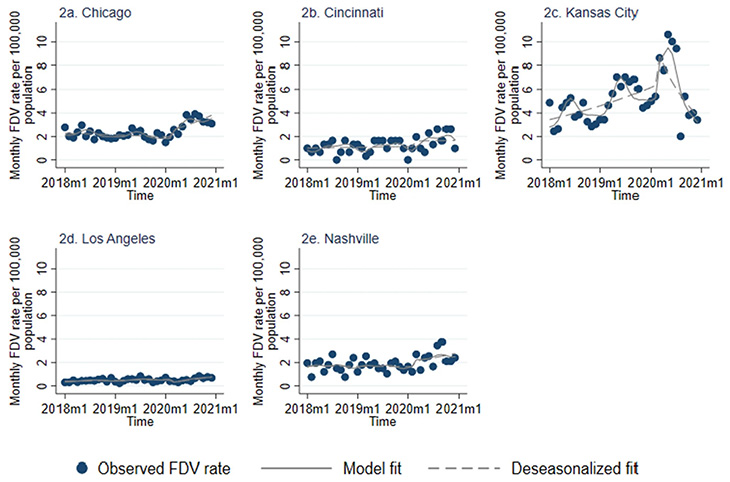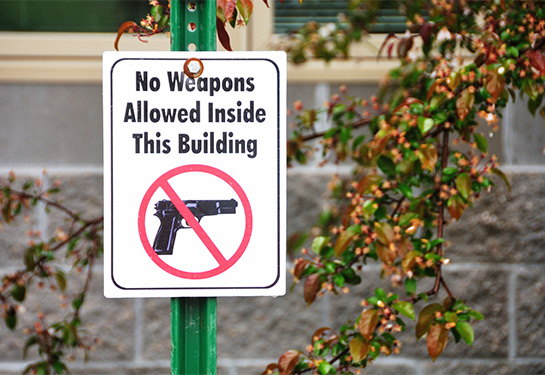Domestic violence involving firearms increased during COVID-19 pandemic
Study of five major U.S. cities shows variation in domestic violence trends
Domestic violence went down or stayed the same during the first 10 months of the COVID-19 pandemic in five major U.S. cities. However, domestic violence involving firearms increased in three of those cities, according to a new UC Davis study published in the Journal of Family Violence.
“The increase in firearm domestic violence is concerning, as abuser firearm access is a risk factor for lethality,” said Elizabeth Tomsich, a research data analyst at the UC Davis Violence Prevention Research Center and first author of the study.
Comparing firearm domestic violence before and during pandemic
Although firearm purchasing and violence surged dramatically during the pandemic, research on firearm-involved domestic violence has been limited.
To determine the trends in domestic violence and firearm domestic violence before and during the COVID-19 pandemic, the researchers used police-reported crime data from Jan. 1, 2018 through Dec. 31, 2020. The onset of the pandemic was considered to be Mar. 20, 2020. The cities examined were Chicago, IL; Cincinnati, OH; Kansas City, MO; Los Angeles, CA; and Nashville, TN. The analysis looked at three main areas:
- domestic violence incidents
- firearm domestic violence incidents
- firearm domestic violence as a proportion of domestic violence incidents

Findings
The researchers found variations among all five cities in the reported data.
- Domestic violence: After the start of the pandemic, police reports of domestic violence decreased in Kansas City, Los Angeles and Nashville and did not change in Chicago and Cincinnati compared with trends before the pandemic.
- Firearm domestic violence: There was a relative increase in reports of firearm domestic violence at the start of the pandemic in Chicago, Los Angeles and Nashville, with a relative decrease in Kansas City; there were no changes in Cincinnati.
- Domestic violence as a portion of overall domestic violence: There was an increase after the start of the pandemic in Chicago, Los Angeles and Nashville, and no changes were observed in Cincinnati and Kansas City.
The researchers noted the decrease in reported domestic violence contrasted with increases in reported firearm domestic violence.
They point out that the results may reflect a decrease in reporting due to barriers from the pandemic rather than an actual decrease in domestic violence. For example, during the lockdown, it may have been harder for those experiencing domestic violence to report to law enforcement because they were confined with a perpetrator who was monitoring their communications.
By contrast, firearm domestic violence may be less sensitive to pandemic-related forces that may have affected reporting. Among violent crimes, aggravated assault is the most likely to be reported to law enforcement.
Increases in firearm purchasing during the pandemic and the reported increases in domestic firearm violence in some cities remain a concern, as firearm access is associated with a fivefold increase in the odds of intimate partner violence.
“Interventions that prohibit firearm access, such as domestic violence restraining orders and extreme risk protective orders, as well as prohibitions associated with misdemeanor domestic violence convictions, may prove valuable to address the potential increase in the risk of firearm domestic violence,” Tomsich said.
Additional authors include Julia P. Schleimer, Chris D. McCort, and Garen J. Wintemute from the UC Davis Violence Prevention Research Program.
Funding for this research was provided by the Joyce Foundation (SG-20–42400), the Heising-Simons Foundation (2019–1728) and the California Firearm Violence Research Center.
Resources
The UC Davis Violence Prevention Research Program (VPRP) is a multi-disciplinary program of research and policy development focused on the causes, consequences and prevention of violence. Studies assess firearm violence, the social conditions that underlie violence, and the connections between violence, substance abuse and mental illness. VPRP is home to the University of California Firearm Violence Research Center, which launched in 2017 with a $5 million appropriation from the state of California to conduct leading-edge research on firearm violence and its prevention. For more information, visit health.ucdavis.edu/vprp/.




